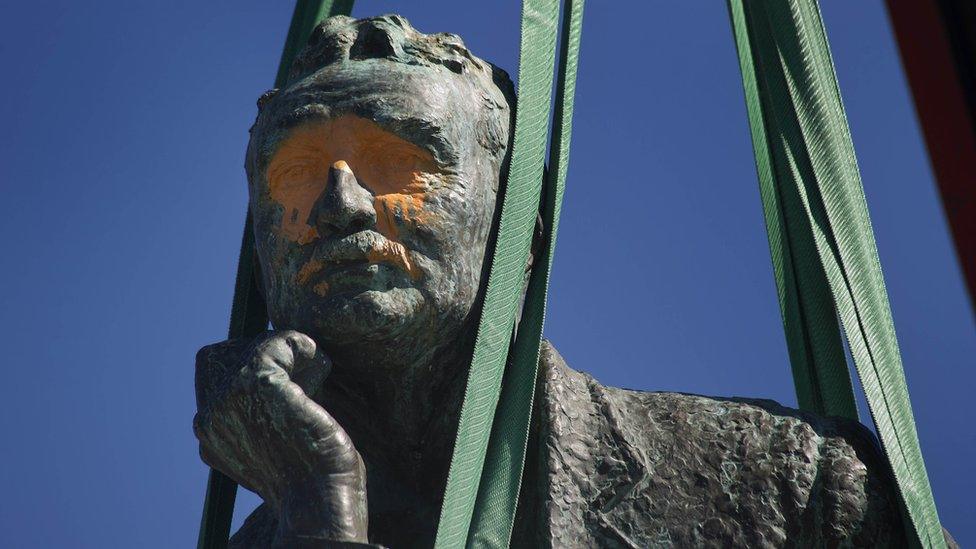Black Lives Matter: Statues are falling but what should replace them?
- Published

From Bodmin to the Orkney Islands, the Black Lives Matter protests have fuelled calls for tributes to proponents of slavery and racist views to be taken down across the UK.
This week, Oriel College in Oxford announced that it wants to take down the controversial statue of colonialist Cecil Rhodes.
It comes after protesters threw a bronze incarnation of slave trader Edward Colston into Bristol Harbour, and a statue of slaveholder Robert Milligan in London's east end was carted away days later.
So with statues falling, what - if anything - should replace them?
Empty space
For campaign group Rhodes Must Fall, the replacement of the Oxford statue "is an issue that needs to be considered and discussed by and within the community".
Among the other controversial figures is that of Conservative politician Henry Dundas, who sits atop a 41m-high column in St Andrew Square in Edinburgh. In the late 18th Century, Dundas argued for a delay to the abolition of slavery. Now, about 12,000 people have signed a petition calling for his statue's removal.
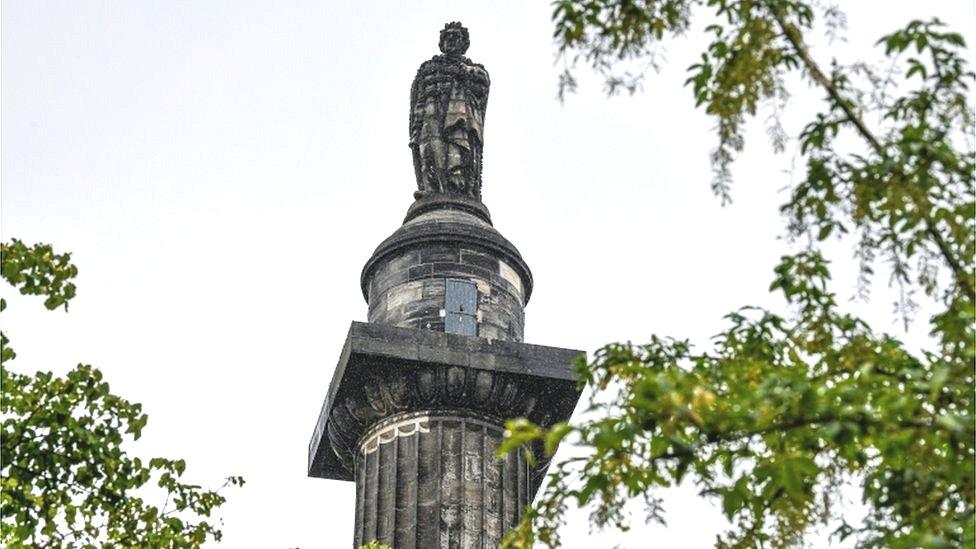
What should come next? Nancy Barrett, who started the petition, tells the BBC replacing the statue would risk "erasing the reality of Edinburgh's involvement in the slave trade".
"An empty column could be the perfect way to show that we are not trying to hide our past, but are aware of the damage it caused," she says.
The City of Edinburgh has proposed that Dundas's statue should stay put - but with a new plaque dedicating it to those enslaved as a result of his actions. The move is supported by Sir Geoff Palmer, professor emeritus at Heriot-Watt University, who told the BBC there was "nothing about slavery" on the original plaque.
'Who do we value?'
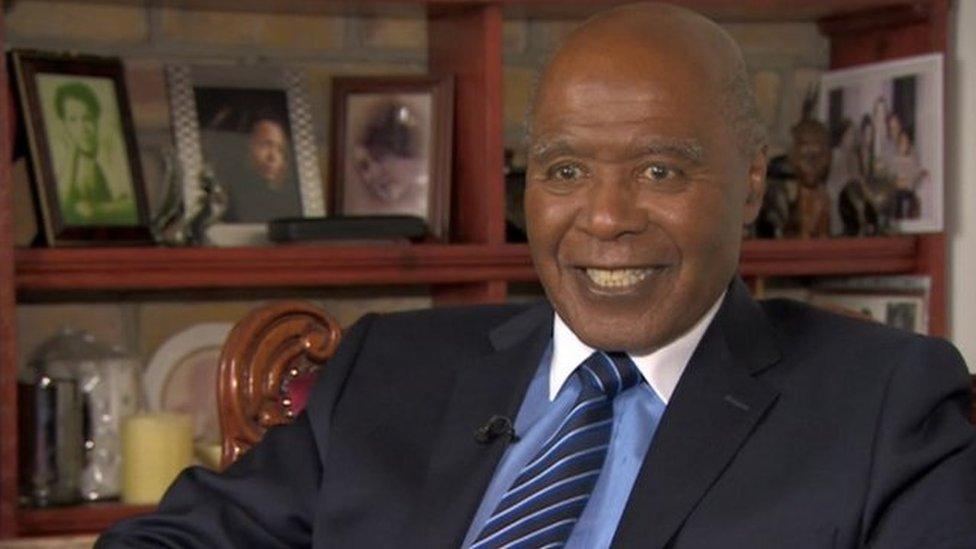
The Bristol bus boycott, led by Paul Stephenson, contributed towards the creation of the Race Relations Act 1965
About 300 miles away in Bristol, a petition is calling for a statue of Paul Stephenson to be erected in Colston's place. He organised the Bristol bus boycott of the 1960s, which saw campaigners overturn a ban on ethnic minorities working on the city's buses.
University of Bristol historian Dr Madge Dresser says Stephenson resonates with many people because the story of the boycott is "so hopeful" - but he was just one of a number of people who helped effect change.
She would be open to having something installed to mark the space where Colston's statue stood, however, and thinks whatever it is should encourage "the kind of civic conversation we need to have".
It could be Banksy's suggestion that Colston's statue be joined by other statues of protesters pulling it down, or an empty plinth for artwork like Trafalgar Square's Fourth Plinth. Some want a boat for black artists moored close to where it was thrown into the harbour.
"It sort of says: who do we value? And, of course, who's the 'we'?" she says. "That's really important because it does affirm a kind of collective identity which could be very exclusionary if it's not done right."
Allow Instagram content?
This article contains content provided by Instagram. We ask for your permission before anything is loaded, as they may be using cookies and other technologies. You may want to read Meta’s Instagram cookie policy, external and privacy policy, external before accepting. To view this content choose ‘accept and continue’.

For Courtney Powell, who started a petition to remove a statue of Sir Francis Drake in Plymouth, the answer is erecting a memorial to victims of slavery. She believes it would help raise awareness of the voyages he made transporting enslaved people from West Africa to the Caribbean in the 1560s.
"The big misconception with removing the statues is that people think it's removing history, which is not the case. We still have museums and history books," she says.
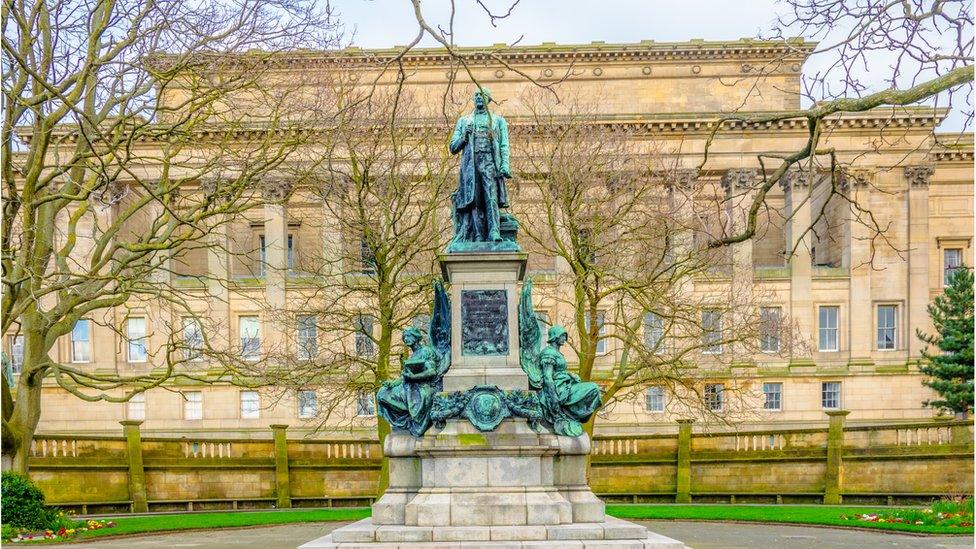
A statue of William Gladstone is in St John's Gardens in Liverpool
But Liverpool-based historian Laurence Westgaph says statues are an important educational tool that give those who don't read history books "a reason to start thinking about the past".
"The public realm is the best classroom," he says. "What I do believe we should be doing is reinterpreting them, moving away from the Victorian, Edwardian idea of these 'great men of history' and giving a far more nuanced and complete version of their history."
Referring to statues of former prime minister and fellow Liverpudlian William Gladstone, he says this could be accomplished by installing plaques with information about his links to the slave trade.
Rather than removing statues, he thinks it is crucial to redress the balance of representation in the public realm - which is why he is fundraising for a memorial to victims of slavery who were buried anonymously in Liverpool.
"If this energy to tear down was put into building up, there's not much that we couldn't achieve," he says.
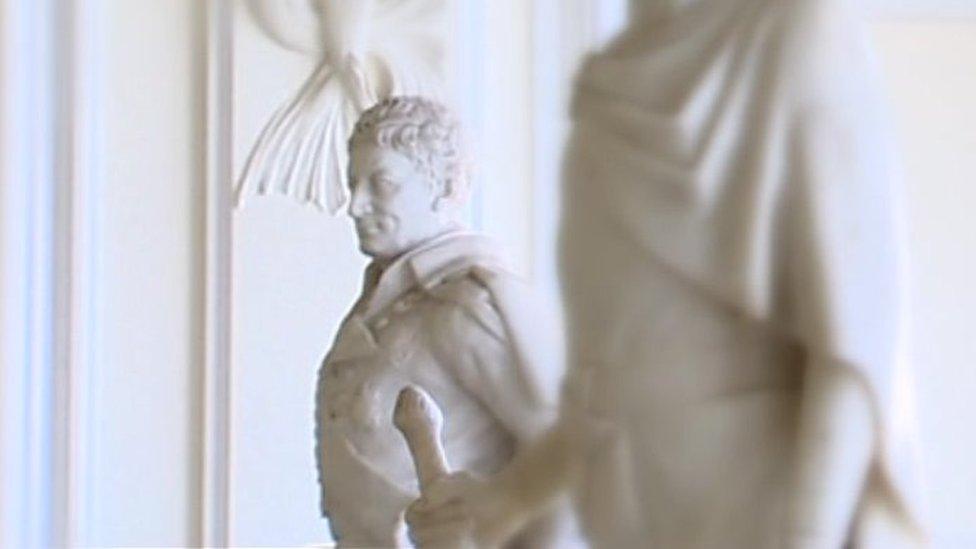
A statue of Sir Thomas Picton (left) can be seen in a gallery of Welsh heroes at Cardiff City Hall
However, for Dan De'Ath, Lord Mayor of Cardiff, the actions of slave owner Sir Thomas Picton - who defended the use of torture while colonial governor of Trinidad - were so "egregious" that his statue must be removed from City Hall.
"It makes you feel deeply uncomfortable, it almost makes you question the institution you're in," he says.
In his view, the statue could be replaced by a different artefact owned by the council - even one that has little to do with race relations (at least, explicitly). In Shrewsbury, for example, a petition suggests that a statue of British colonial general Clive of India could be replaced by other figures from the area, such as poet Wilfred Owen or novelist Mary Webb.
Melissa Sebata, president of Cardiff Metropolitan University's Afro Caribbean Society, says removing Sir Thomas's statue is more of a priority than coming up with a replacement. Having grown up in Oxford, she was well-versed in the debate over the Rhodes statue when she moved to Cardiff three years ago.
"As a black person, it's very traumatising. It's kind of like an abuse victim seeing their abuser everywhere they go and they're being celebrated," she says.
"I think until now people have kind of put it off as me just being dramatic or me just trying to cause trouble. That's why I'm so glad that this is happening on a global scale."
- Published18 June 2020

- Published15 June 2020
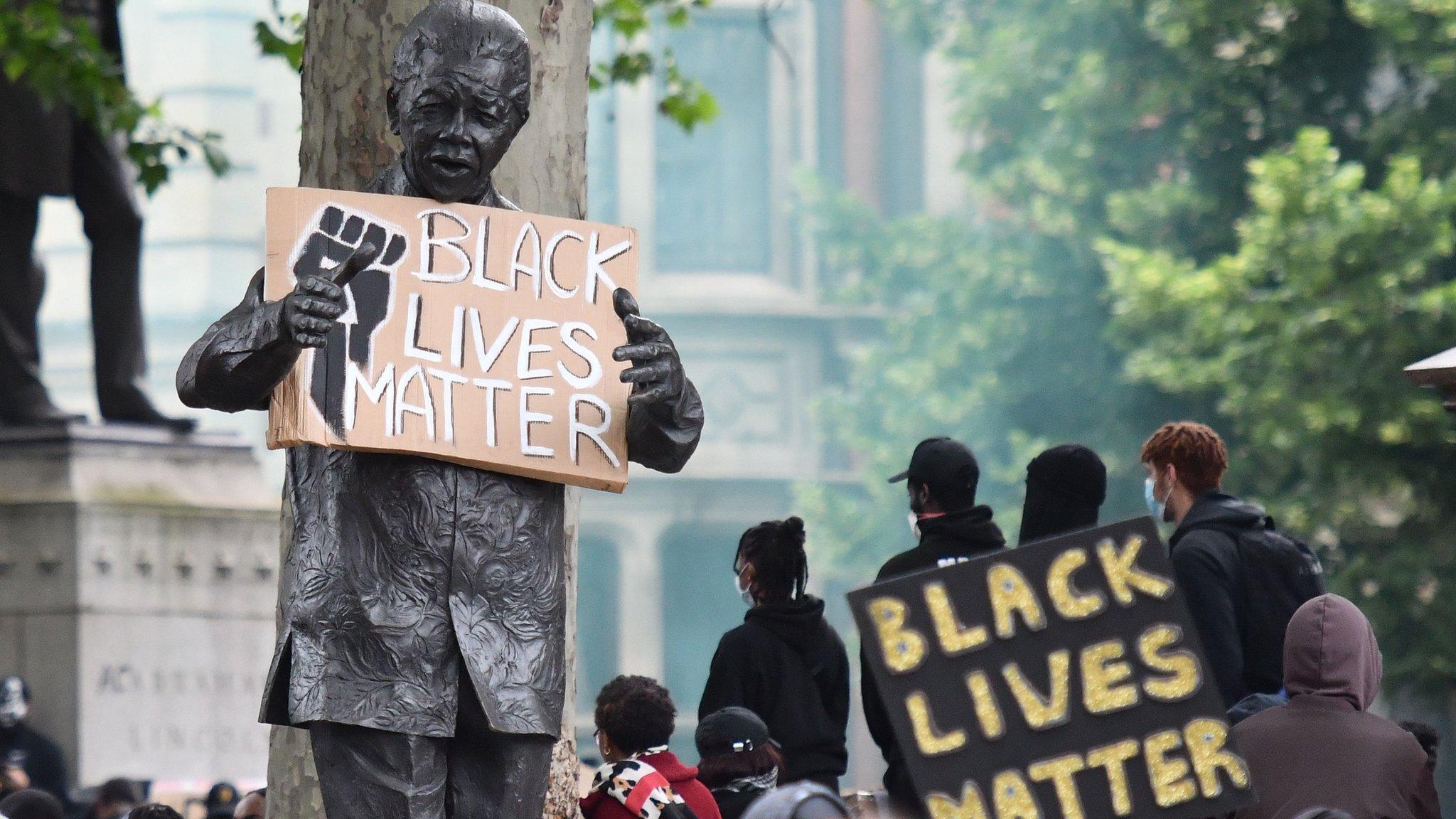
- Published12 June 2020
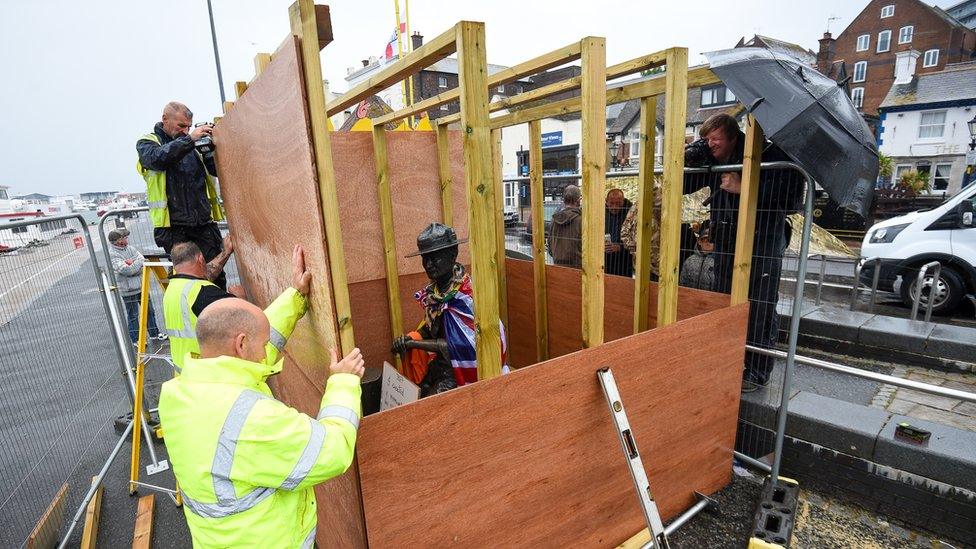
- Published17 June 2020
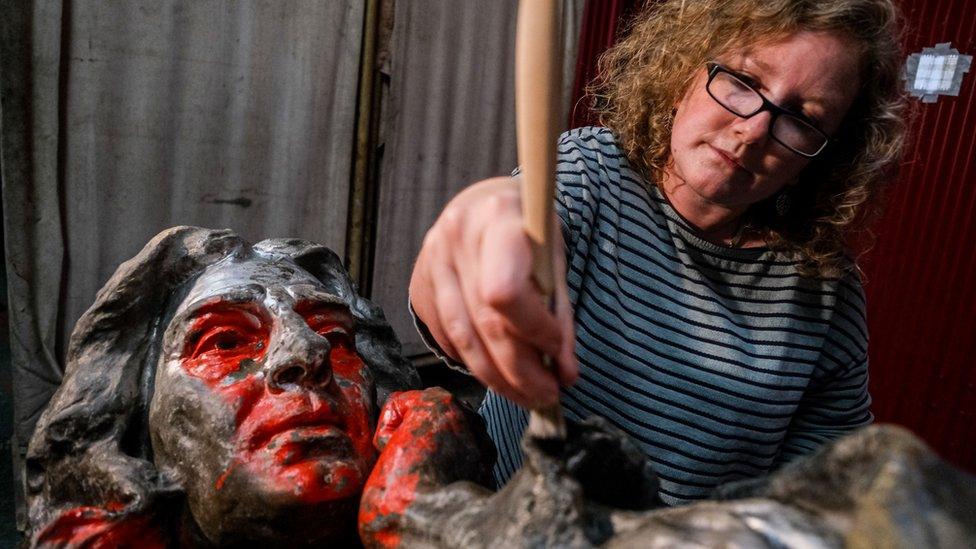
- Published14 June 2020
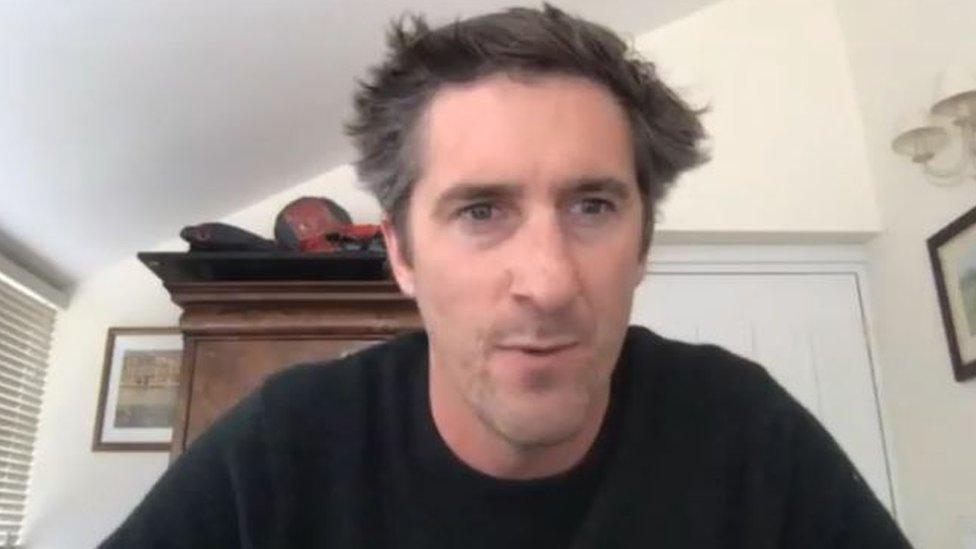
- Published11 June 2020
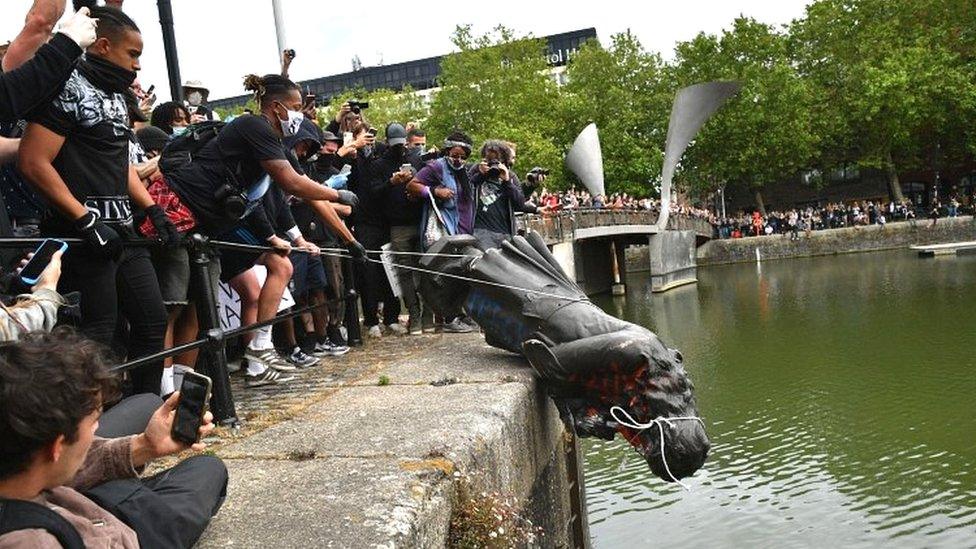
- Published11 June 2020
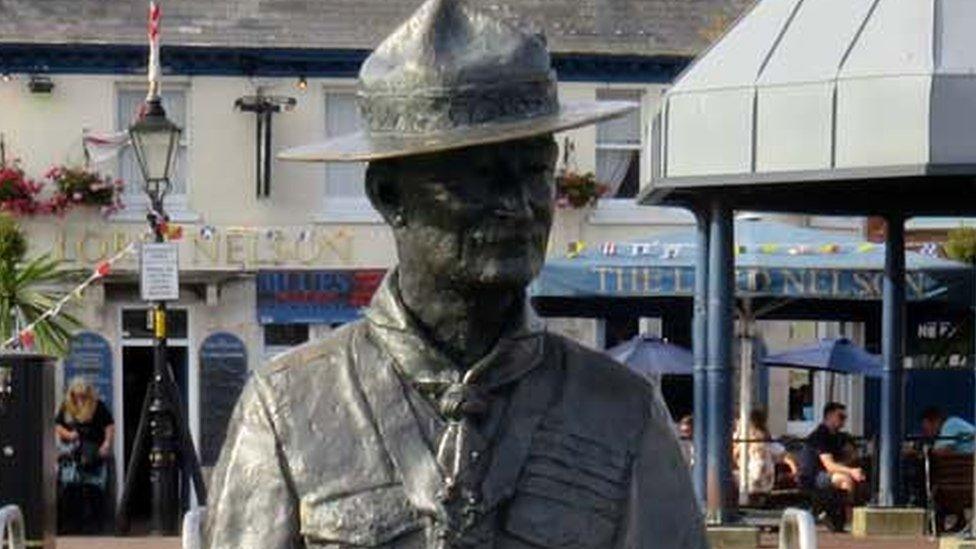
- Published9 November 2017
